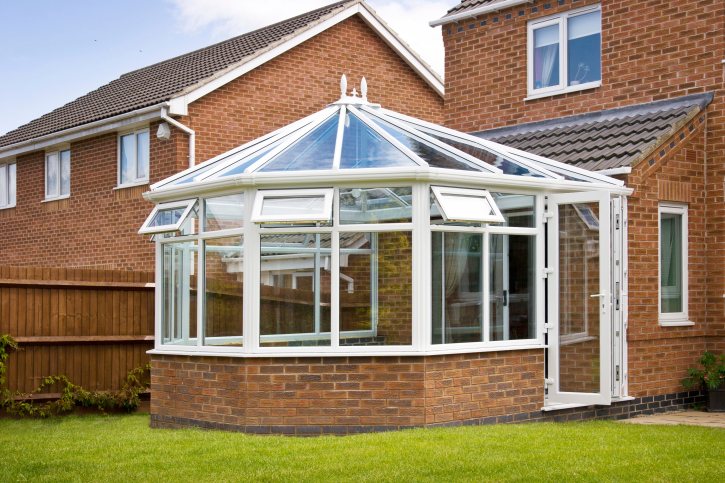If you are a homeowner you have choices if you want to borrow more money. Even if you still have a fair amount left to pay on your mortgage, there are options if you really need a revamped bathroom or a new roof. Joanne Atkin looks at what you can do
If you want to borrow more money to improve or extend your home, there are a number of options open to you. Or you may wish to borrow money for some other reason, such as consolidating debts, buying a car, a second home, to help with a deposit for your children to get on the property ladder or to buy out a partner with whom you share a house.
The options available are:
- An unsecured loan, i.e. a personal loan
- A further advance, also known as additional lending – where your current mortgage provider lends you more money
- Remortgage, where you take out a different mortgage product either with your current provider or a new lender
- A secured loan, also known as a second charge mortgage
The route you go down will depend on how much you want, or can afford, to borrow and why you want the money.
For an unsecured loan you don’t usually need to tell the lender why you want the money but for the other three options, the lender will need to know. This will be part of their risk assessment but it is also down to money laundering rules.
Unsecured loan
Let’s start with the simplest choice – the unsecured loan. This is usually for smaller amounts of money between £1,000 and £10,000 or more perhaps depending on the lender. You do not need a mortgage to take out an unsecured loan.
Some lenders require a minimum income and there may be fees and/or redemption penalties, also known as early repayment charges. Interest rates vary and will depend on your individual circumstances. You may not get the advertised rate as the lender will assess you through criteria such as credit scoring and income.
The cheapest loan at the moment carries an interest rate of 4 per cent rate from Hitachi Personal Finance. So if you took out a £10,000 loan over three years (36 months) the total you pay back is £10,617.12 at £294.92 per month. Over five years (60 months) the total amount repayable is £11,030.40 at £183.84 per month.
There are a few offers at 4.1 per cent too but it could also be worth checking with your bank. Right now HSBC current account holders can get a rate of 3.9 per cent.
Post Office offers an optional two month payment break, subject to approval, but the rate is 7.4 per cent. Using the previous examples based on a loan of £10,000, the amount repayable is £11,142 at £309.50 per month for 36 months or £11926.20 at £198.77 per month for 60 months.
Further advance
If you have a mortgage, your options open up. Depending on your lender, additional borrowing usually starts at £10,000 but some lenders will consider £5,000. Most lenders require that you have had your mortgage for six months.
The first port of call is to speak to your lender who will be able to advise whether an unsecured loan, further advance or remortgage is best for you.
You will need to go through an affordability check, which includes income, outgoings and credit checks. Go to the appointment prepared by making sure you have documents such as pay slips, recent bank statements and proof of identity.
There may be arrangement fees, product fees, valuation fees if the lender needs to revalue the property, and early repayment charges. You need to check with your lender what these are so you are clear on the costs.
Amyn Fazal, chief executive of Penrith Building Society, says: “We don’t charge fees for additional borrowing, unless it is necessary to arrange for a valuation. This might be the case if there is not much equity in the property.”
In some cases you might need to use a conveyancer but again this depends on the lender, the extent of the work you are undertaking or the size of the loan. If you want a loan to buy out a partner, you may need to appoint a conveyancer to act for you and for the lender.
The maximum amount you can borrow in total, with your existing mortgage and additional borrowing, varies among lenders. Halifax will lend up to 80 per cent of the value of your property on a repayment basis or 75 per cent on an interest-only basis. Many lenders will not consider interest-only anymore but those that do will need to see evidence of a repayment plan that fits in with their criteria.
If you’re planning to make improvements or repairs to your property, Halifax recommends that you contact suppliers and get estimates: “Make sure you understand when you’ll need to pay for any work – you may not be able to get your loan from us before the work is complete.”
If you are carrying out substantial building works, the money might be lent to you in stages – similar to the way self-build works – and you will have to supply a schedule of costings.
Interest rates and fees vary from lender to lender and will often be different to your current mortgage rate. But to give you an idea, additional borrowing for two years on a loan-to-value (LTV) up to 80 per cent at Halifax is 5.89 per cent for loans between £10,000 and £50,000; for higher loans up to £2 million the rate is 3.98 per cent. After two years the rates revert to the standard variable rate (SVR), currently 3.99 per cent.
At Santander you can borrow up to 85 per cent of your home’s value with terms ranging from between five and 35 years. The interest rates on two and three year deals range from 4.99 per cent to 5.49 per cent for loans between £5,000 and £49,999. The higher borrowing of £50,000 to £1.5 million sees rates between 3.99 per cent and 4.49 per cent. At the end of the term all rates revert to SVR, currently 4.74 per cent, and there is no booking fee.
Nationwide will also lend up to 85 per cent LTV including the current mortgage, except for capital raising for business purposes or to buy land or property to be let. Current deals include a two-year discount at 1.79 per cent or a 2.19 per cent fixed rate but both these products have fees of £999. The no-fee products are 2.34 per cent for the two-year discount and 2.74 per cent for the fixed rate.
So how much can you borrow on a further advance? As an example, at Cambridge Building Society, you can borrow up to 90 per cent of the property’s value. So if the house was worth £150,000 and you had £99,000 left to pay, that means you have a loan-to-value of 66 per cent so you could borrow up to £36,000.
Remortgaging
When you come to the end of your current mortgage deal, your rate usually reverts to SVR but the other option is to remortgage onto another product.
If you have a good amount of equity in your property, for example your house is worth £200,000 and you have £100,000 left to pay on the mortgage, the loan-to-value is 50 per cent. You could increase the size of your mortgage instead of taking out a further advance. But you really need to discuss this with your lender.
It may not be worth remortgaging if you are on a low mortgage rate, as you will probably have to move to a higher interest rate. But if you can afford that in order to increase the size of your home, for example, it may be a price worth paying.
You also don’t have to stay with your current lender. If you do want to move lender it’s a good idea to speak to an independent mortgage adviser who will be able to source the best deal for your circumstances.
Secured loans
Another option is to take out a secured loan, also known as a second-charge mortgage, as you are taking out a second mortgage on top of your first one. These tend to be more expensive than further advances or remortgaging but they are a good alternative option for a number of reasons, such as your current mortgage lender won’t lend you any more money, perhaps due to past mortgage arrears, County Court Judgements (CCJs) or a poor credit score.
The secured loans industry has had a bit of a shady reputation in the past but things are changing. In April 2014, the Financial Conduct Authority took over regulation from the Office of Fair Trading. In addition, on 21 March 2016 secured loans will be fully regulated and follow the same rules as the first charge market – the Mortgage Market Review, which was introduced on 26 April 2014.
According to secured loans broker Loans Warehouse there are 220 second charge products available from 17 different lenders and it is a growth area. August saw the monthly lending figures increase year-on-year for the 33rd consecutive month.
A secured lender will usually need to get information from your current mortgage provider and there is a possibility that the first charge lender will not agree to the second charge loan.
As with your first mortgage, you are being granted a loan secured on your home. If you miss payments there is a chance your home could be repossessed so make sure you do not overstretch yourself.
The amount you can borrow will depend on your income, your credit score and your existing credit commitments, as well as the amount of equity available in your property. There are also fees to consider for administration, legals, valuation and broker fees.
To get a second charge mortgage you must see a mortgage intermediary or a specialist secured loans broker. Some banks will refer you to a secured lender that they have an arrangement with, for example, Barclays and Freedom Finance.
Matt Tristram, managing director of Loans Warehouse, says: “If you have a very good profile and equity in your property there are rates stating from under 6 per cent. Higher rates will be for people who have problems with affordability or mortgage arrears or CCJs.”
Philip George, managing director of Shawbrook Bank, says its average rate is less than 10 per cent. But bear in mind that rates can be higher, particularly if you don’t have much equity in the property; but loans are available up to 95 per cent LTV.




